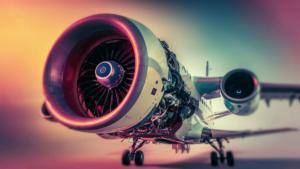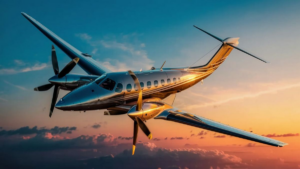Have you ever looked up at the sky and wondered how high commercial aircraft fly? It’s a question that many people ponder, whether they’re frequent flyers or simply curious about the world above. In this article, we’ll delve into the heights reached by commercial airplanes and explore the factors that influence their cruising altitudes.
The Typical Altitude of Commercial Aircraft
Commercial aircraft typically fly at cruising altitudes ranging from 30,000 feet to 40,000 feet. This equates to approximately 5.7 to 7.6 miles above sea level. However, the exact cruising altitude can vary depending on several factors, including the aircraft type, weight, weather conditions, and air traffic control instructions.
Aircraft Type
The type of aircraft plays a significant role in determining its cruising altitude. For example, smaller regional jets may fly at lower altitudes compared to larger wide-body aircraft used for long-haul flights. Turboprop aircraft, which are commonly used for short-haul flights, typically cruise at lower altitudes than jet-powered planes.
Aircraft Weight
The weight of the aircraft also influences its cruising altitude. Heavier aircraft may need to fly at lower altitudes to maintain optimal performance and fuel efficiency. Conversely, lighter aircraft may be able to climb to higher altitudes more quickly.
Weather Conditions
Weather conditions, such as turbulence and wind patterns, can impact the cruising altitude of commercial aircraft. Pilots may adjust their flight levels to avoid adverse weather conditions and ensure a smoother and more comfortable journey for passengers.
Air Traffic Control Instructions
Air traffic control plays a crucial role in managing the airspace and directing aircraft to maintain safe separation distances. Controllers may assign specific cruising altitudes to aircraft based on their flight plans, traffic volume, and other factors.
Why Do Commercial Aircraft Fly at High Altitudes?
There are several reasons why commercial aircraft fly at high altitudes:
- Fuel Efficiency: Flying at higher altitudes allows aircraft to take advantage of thinner air and lower air resistance, resulting in reduced fuel consumption.
- Speed: Commercial jets often reach their optimal cruising speeds at higher altitudes, enabling faster travel times.
- Weather Avoidance: Flying at higher altitudes can help aircraft avoid turbulent weather conditions commonly found at lower altitudes.
- Optimal Performance: Many modern commercial aircraft are designed to operate most efficiently at higher altitudes, where engine performance is optimized.
The Highest Altitudes Reached by Commercial Aircraft
While most commercial aircraft typically cruise below 40,000 feet, some specialized aircraft, such as the Concorde supersonic jet, have reached much higher altitudes. The Concorde, for example, could cruise at altitudes exceeding 60,000 feet, allowing it to travel at supersonic speeds.
Commercial aircraft fly at altitudes that optimize fuel efficiency, speed, and passenger comfort. While cruising altitudes typically range from 30,000 to 40,000 feet, various factors influence the exact altitude at which an aircraft operates. Understanding the reasons behind these altitude choices can provide insight into the fascinating world of aviation.
Frequently Asked Questions about Commercial Aircraft Altitudes
- Is there a maximum altitude that commercial aircraft can reach?
Yes, there is a maximum altitude that commercial aircraft can safely reach. This maximum altitude is determined by factors such as aircraft design, engine capabilities, and structural limitations. - How do pilots decide on the cruising altitude for a particular flight?
Pilots consider various factors when deciding on the cruising altitude for a flight, including aircraft weight, weather conditions, air traffic control instructions, and fuel efficiency requirements. - Do all commercial aircraft fly at the same altitude?
No, not all commercial aircraft fly at the same altitude. The cruising altitude can vary depending on factors such as aircraft type, weight, and route specifics.
Factors Influencing Commercial Aircraft Altitudes
Aside from the primary factors mentioned in the article, there are other influences on the cruising altitudes of commercial aircraft:
| Factor | Description |
|---|---|
| Traffic Density | High traffic volume in certain airspaces may result in aircraft flying at lower altitudes to maintain safe separation distances. |
| Airspace Restrictions | Some regions may have airspace restrictions due to military operations or geopolitical reasons, affecting the cruising altitudes available to commercial flights. |
| Special Operations | During certain operations such as aerial refueling or military exercises, commercial aircraft may be required to fly at different altitudes than usual. |
See also:






